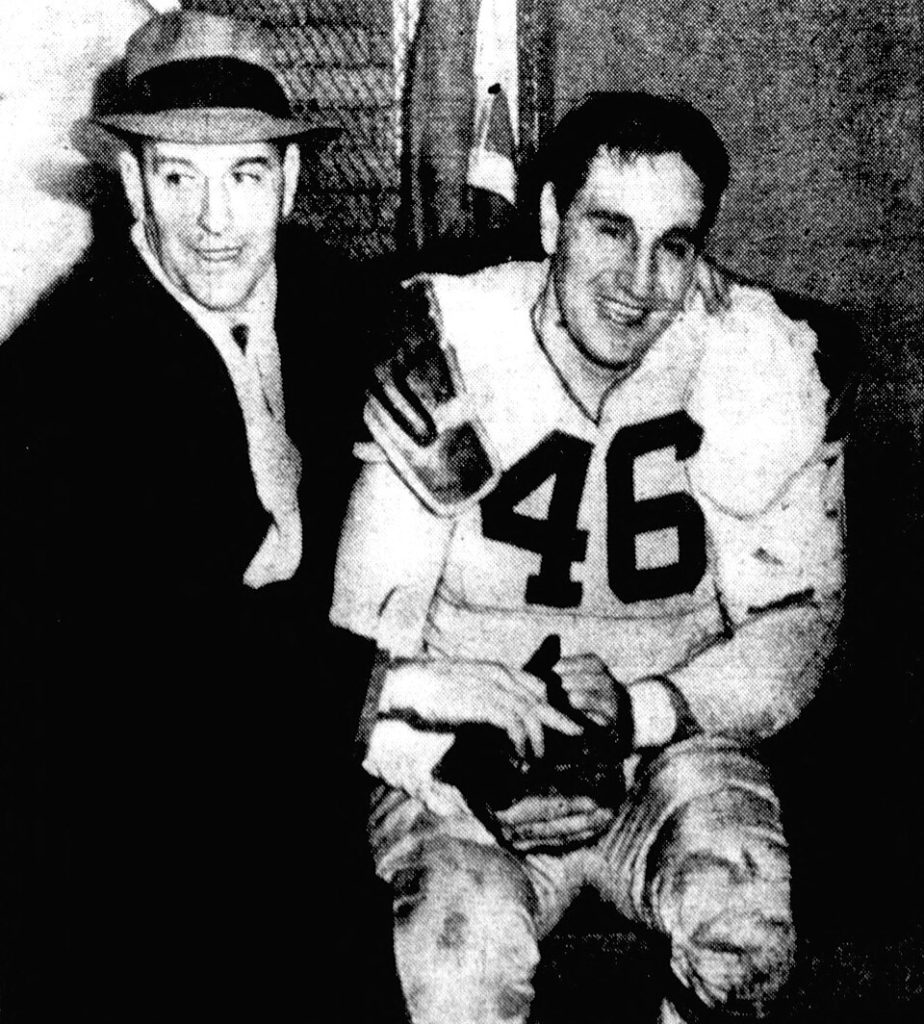As a follow-up to our article comparing American football to radiosport, OnAllBands offers this look into how radio communications and football converged in 1956.
Since the beginning of time, people have looked for ways to get ahead in competitive sports. From bribery to sabotage, there are millions of examples dating back to Ancient Greece. However, the best form of cheating (stick with us here) is when it changes the face of sports as we know it.
One such example would be former Cleveland Browns coach—and arguably the greatest of all time—Paul Brown and his introduction of the helmet radio receiver. It’s common practice now for quarterbacks to communicate with their coaches via radio helmets, but back then it might as well have been steroids.

Brown was known for being a forward-thinking coach. Before introducing the helmet radio, he invented a system of communication for play calling using a substitute player. This eliminated the need for the quarterback to call the plays and stopped the risk of other teams hearing the calls if someone on the sideline called it.
The helmet radio was created by John Campbell and George Sarles, two inventors from Cleveland. It utilized a directional receiver and microphone that was mounted inside the helmet. The two refined their idea in the backyard of Campbell’s home. During one of the tests, Sarles went into the woods with the helmet on. When he didn’t come back, Campbell went looking for him. He later found Sarles being interrogated by a policeman who had intercepted the signals.
Fortunately, the officer was a Browns fan and agreed to keep the discovery to himself so that the two inventors could keep working. Talk about lucky breaks.
The helmet was first used in a 1956 exhibition match against the Detroit Lions. Everything was going smoothly until someone from the Lions’ coaching staff noticed that coach Brown wasn’t using substitutions to call plays. The hidden transmitter on the Browns’ sideline was discovered soon after, according to the Pro Football Hall of Fame.

Following that game, other teams attempted to create their own version of the radio innovation but couldn’t quite match it. Meanwhile, the Browns used the helmet in three more games before NFL Commissioner Bert Bell outlawed it because he feared the unfair advantage it gave teams. The irony was that this decision came days after the New York Giants figured out the radio’s major weakness. It relied on shortwave transmissions, which weren’t secure. This meant if anyone knew what frequency the Browns were using, they could easily listen in. Guess what team, days before the match, contacted the FCC to find out what frequency the Cleveland Browns used?
The Giants had one of their players, a former Brown, listen and decipher the play calls. That sounds a lot like cheating. In that game, the Browns only rushed for 40 yards and threw for 134 yards in front of 60,000 fans, according to the blog Dawgs By Nature.
The radio receiver was outlawed for nearly 40 years. It wasn’t until 1994 that the technology was reintroduced and is now a standard feature in the NFL.
The helmet, which was the first of its kind, was donated to the Pro Football Hall of Fame in 1985 by Campbell. Were Campbell and Sarles licensed hams? OnAllBands couldn’t confirm this one way or the other, but their innovative spirit—that truly changed the face of football forever—was certainly representative of amateur radio operators who continue to push the limits of communications technology.
Editor’s Note: If you’re looking for a memorable road trip, the Pro Football Hall of Fame in Canton, Ohio, is only 25 minutes from Summit Racing Equipment and DX Engineering headquarters and showroom near Akron. Check out the radio helmet and then make an end run up the interstate to purchase the best in amateur radio equipment—all in one day! Also note that several members of the DX Engineering team are members of the CQ Amateur Radio Hall of Fame and CQ Contest Hall of Fame.

